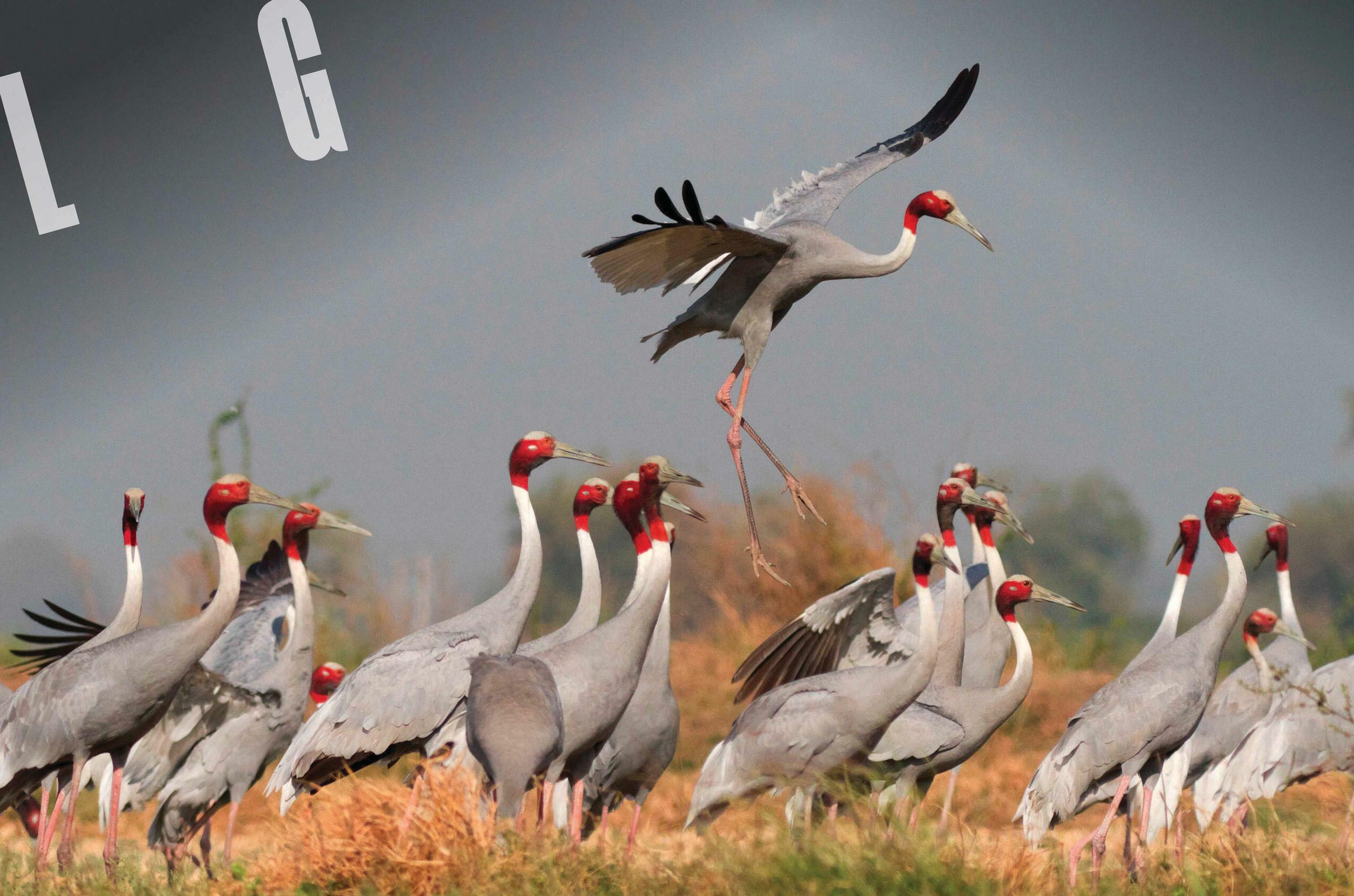Prøve GULL - Gratis
LIFTING CRANES
BBC Wildlife
|July 2025
The tallest flying bird in the world owes its survival to a special relationship with small farmers in the most populated part of India

NASEERUDDIN ALI TAKES great pride in his home village of Madanpura, nestled in the northern reaches of the state of Uttar Pradesh in India, as it is one of the few locations where the world's tallest flying bird, the sarus crane, has chosen to settle and the only place where it is thriving.
Ali, a traditional farmer who sells his produce in the nearby town, often sees sarus cranes. He is excited when a pair suddenly appears. Flying with their necks outstretched and long legs trailing behind, these non-migratory waders cut a dramatic figure. Their heads, throats and upper necks are conspicuously crimson, set against white neck bands and dusky-grey breast and wing plumage. The duo gracefully descends on to Ali's half-a-hectare plot, flapping their mighty 2.5m-long wings and settling on to delicate pink legs to stand nearly 2m tall.
Many farmers in Uttar Pradesh believe these birds are indicators of a healthy agricultural ecosystem, and that their presence heralds a good harvest. "When they sweep past our fields, swaying the crops beneath them, they bestow fecundity and abundance to the land," says Ali, expressing his gratitude.
The term 'sarus' comes from the Sanskrit word sarusa, which translates as 'lake-dwelling bird' and, sure enough, the sarus crane loves water. A resident of flooded paddy fields, wetlands and ponds, it can often be seen ducking its head in the shallows and mud, foraging for tubers with its long, pointed bill, or probing for prey such as crabs, lobsters, fish and snails. On dry land, it also uses its beak to forage for seeds and grains, insects such as grasshoppers, and frogs.
Denne historien er fra July 2025-utgaven av BBC Wildlife.
Abonner på Magzter GOLD for å få tilgang til tusenvis av kuraterte premiumhistorier og over 9000 magasiner og aviser.
Allerede abonnent? Logg på
FLERE HISTORIER FRA BBC Wildlife

BBC Wildlife
SNAP-CHAT
Isaac Szabo talks hellbenders, chub nests and bears on the roof
3 mins
December 2025

BBC Wildlife
Why are the tropics so diverse?
AS YOU MOVE FROM THE POLES towards the equator, species richness increases.
1 mins
December 2025

BBC Wildlife
Magnificent frigatebird
ONE MIGHT BE FORGIVEN FOR thinking that pterodactyls had been de-extincted upon first sighting the silhouette of a magnificent frigatebird.
3 mins
December 2025

BBC Wildlife
YEAR OF THE CAT
Once a phantom of Chile's windswept peaks, this plucky feline is making a comeback
3 mins
December 2025

BBC Wildlife
KATE BRADBURY
“I feel I am part bird at this point at the year's end: I'm ready for spring”
2 mins
December 2025

BBC Wildlife
SNOW DAYS
High in the boreal forests of Colorado, the snowshoe hare lives a secretive life. But one photographer has gained a unique window into its world
3 mins
December 2025

BBC Wildlife
A journey into sound
Progressive hearing loss prompted a memorable quest to absorb nature's calls and choruses
7 mins
December 2025

BBC Wildlife
WILD IN THE CITY
A huge parliament of long-eared owls has made an unlikely home in a Serbian town square
2 mins
December 2025

BBC Wildlife
Birds follow the flames
In the Sierra Nevada of California, fire gives some birds a boost
1 mins
December 2025

BBC Wildlife
Remembering Jane
The ethologist, conservationist and humanitarian Dr Jane Goodall died in October. We reflect on the woman who gave the world hope
5 mins
December 2025
Listen
Translate
Change font size
